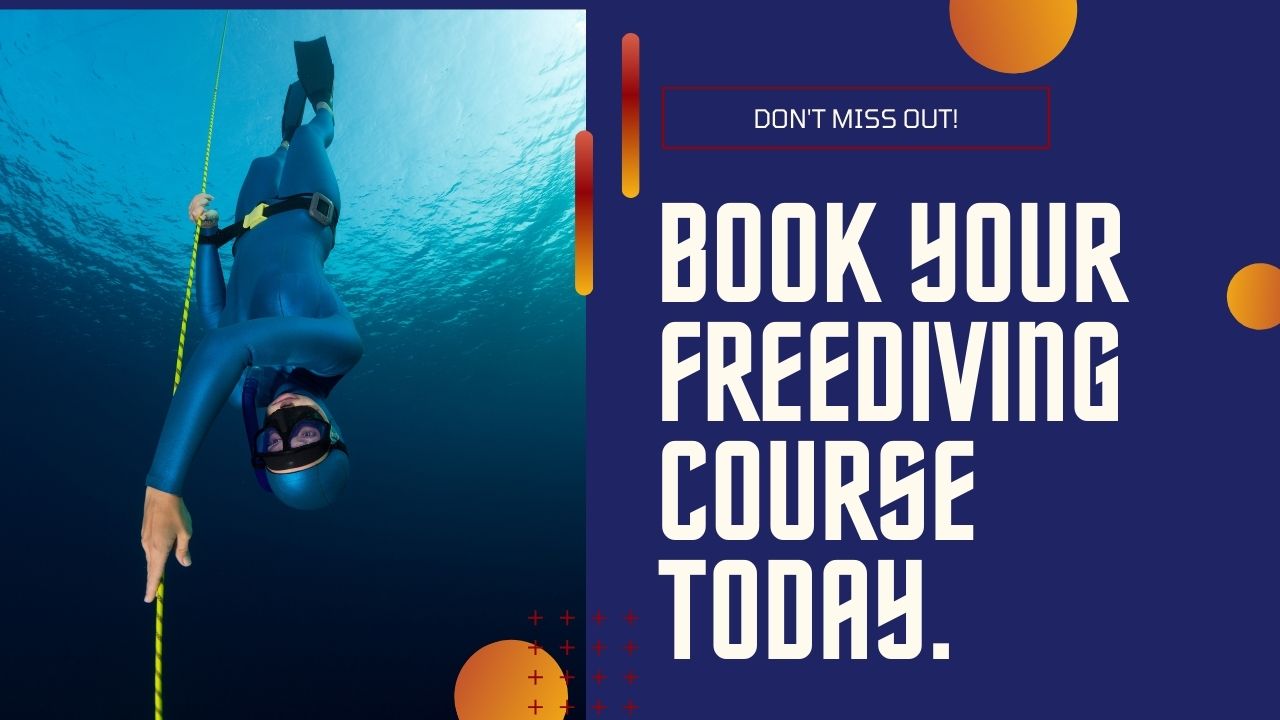You have 0 product(s) in your cart.
Abyss Scuba Diving
Mastering The Depths: Essential Techniques For Deep Freediving Success
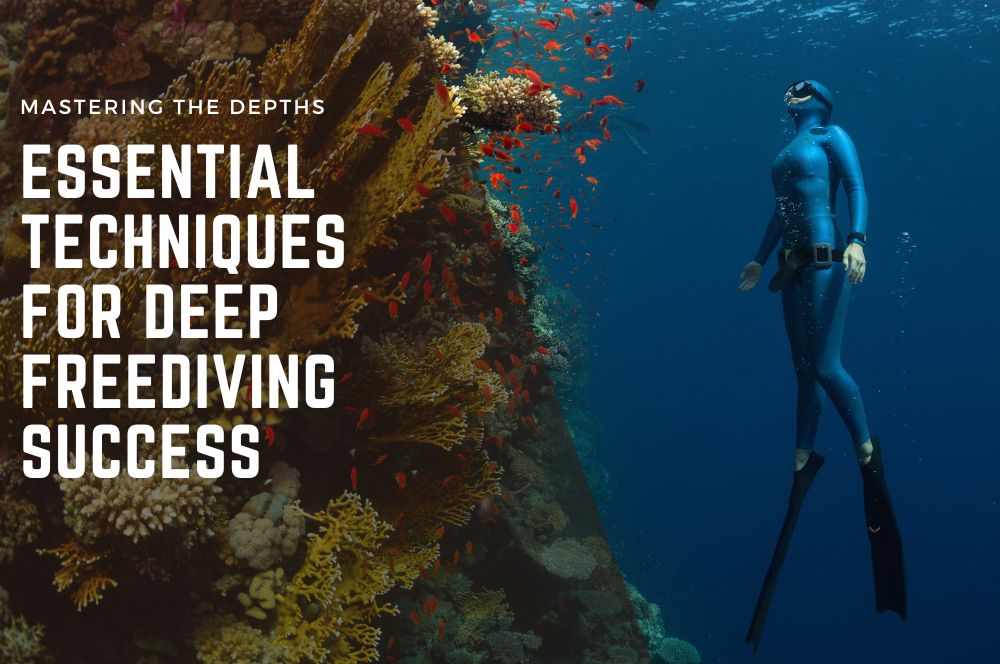
Mastering the Depths: Essential Techniques for Deep Freediving Success
Going beyond snorkeling or casual diving, deep freediving pushes your limits and challenges your discipline. You may wonder how to start, what risks are involved, and how to train both mind and body for such an adventure. This article answers these core questions without fluff. Expect insights into the disciplines of freediving, the physical and mental preparations required, and the safety measures that make it an exhilarating, yet secure pursuit. Whether you aim for personal milestones or aspire to break records, we guide you through the essential realms of deep freediving.
Key Takeaways
-
Deep freediving is an extreme sport that requires skill, discipline, and mental and physical preparation, with disciplines like CWT, FIM, and CNF offering diverse challenges.
-
Record-setting dives by athletes such as Herbert Nitsch and Alessia Zecchini illustrate the extraordinary potential of human breath-hold capabilities in freediving.
-
Safety in deep freediving is paramount, and risks such as lung squeeze, decompression sickness, and blackouts can be mitigated with proper training, gear, and adherence to safety protocols.
The Art of Deep Freediving
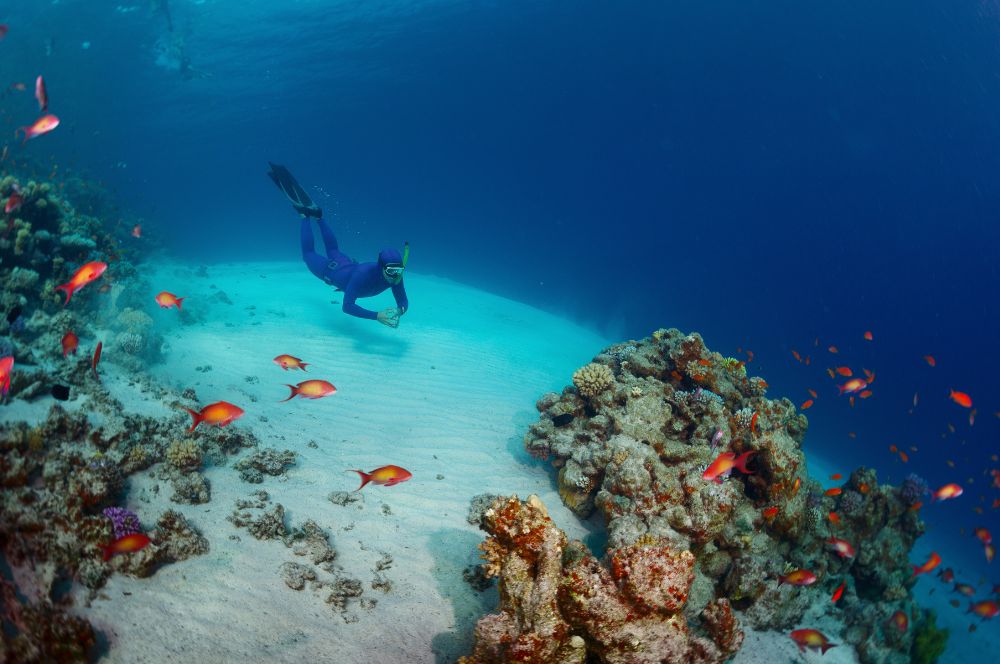
Deep freediving is a unique blend of discipline, skill, and relaxation. As freedivers, we immerse ourselves in the underwater world on a single breath, exploring the depth of our abilities and the ocean’s mysteries. This extreme sport involves various disciplines, each presenting unique challenges and requiring specific freediving skills for success.
Whether it’s mastering the following disciplines in the world of freediving:
-
Constant Weight (CWT) with your trusty bifins
-
Free Immersion (FIM) while navigating the rope
-
Constant Weight No Fins (CNF) by powering through the depths
Each discipline offers a unique adventure in the world of freediving.
Constant Weight (CWT) and Bi-Fins
In the practice of deep freediving, Constant Weight (CWT) stands as a popular discipline. It involves the use of bifins or a monofin for propulsion along a diving line, both downward and upward, with no change in weight or use of guide ropes. The choice between traditional bifins, which consist of two separate blades, and monofin, with its single blade, often comes down to personal preference and the specific demands of the dive.
With long blade freediving fins designed to maximize propulsion and efficiency, taking a deep dive becomes an exhilarating experience for a deep diver during deep dives, making deep diving truly unforgettable as they dive deep into the ocean.
Free Immersion (FIM)
Free Immersion (FIM), another discipline, is a true test of strength and determination. In this case, without the assistance of fins or propulsion devices, we manually pull ourselves along the line, both descending and ascending. It’s a slower, more deliberate dive, where we rely solely on our sheer power and will.
With only a wetsuit and weights as our companions, we can truly experience the ocean’s depth and our own capabilities.
Constant Weight No Fins (CNF)
The most challenging discipline is Constant Weight No Fins (CNF). In this discipline, freedivers don nothing more than a wetsuit and minimal weight, relying solely on their muscle strength for propulsion. This discipline demands a modified breaststroke to swim both down to depth and back up without the assistance of fins. It’s a pure test of strength, technique, and determination.
Record-Breaking Deep Dives
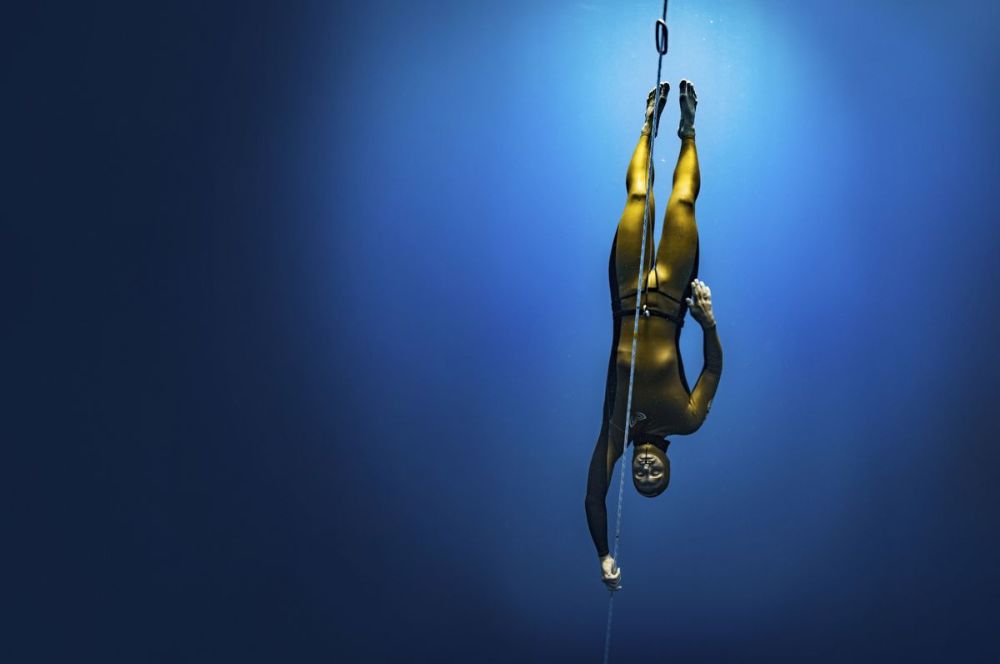
While each dive is a personal triumph, record-breaking dives are a testament to human capabilities and the heights (or rather, depths) we can reach. These remarkable achievements inspire and motivate us, reminding us of the limitless potential in deep freediving.
Let’s celebrate some of these record holders who have made waves in the freediving world.
Male World Record Holders
In the male category, we have extraordinary athletes like Herbert Nitsch, known as ‘the deepest man on earth’, holding world records in all eight AIDA International recognized freediving disciplines. His astounding dive to 214 meters in the No Limit category in 2007 continues to inspire many freedivers.
More recently, Alexey Molchanov set the Variable Weight freediving record at 156 meters in 2023. These champions have paved the way for aspiring male freedivers.
Female World Record Holders
Just as impressive are the records set by female freedivers. Alessia Zecchini of Italy is a shining example, setting a new world record in the deepest constant weight freedive for females by reaching a depth of 123 meters in 2023. As a female world record holder, her fellow record holder, Kathryn Sedurska of Ukraine, set a new female world record in the Constant Weight No Fins category by diving to a depth of 76 meters in the same year. They stand as shining examples of the potential of female freedivers.
Preparing Your Body and Mind for Deep Freediving
Deep freediving encompasses more than just physical strength; it is a holistic discipline requiring the involvement of both body and mind. Optimal breath-hold times and overall performance hinge on proper mental and physical preparation. It’s about developing your physical fitness and learning to harness the power of your mind to overcome the challenges of the deep.
Mental Preparation
The mental aspect of deep freediving is as crucial as the physical. We utilize techniques such as meditation, visualization, and relaxation exercises to manage stress and anxiety during our dives. These methods help us attain a calm mind and relaxed body, optimizing our breath-hold times, and enhancing our overall diving performance.
Physical Conditioning
On the physical front, activities such as lung stretches, diaphragmatic breathing, and aerobic workouts are crucial. These exercises improve our breath-hold duration and diving technique, making us better, safer divers. Regular practice also leads to physiological adaptations such as increased lung capacity, which is beneficial for our overall health.
Safety First: Minimizing Risks in Deep Freediving
As an extreme sport, deep freediving carries certain inherent risks. However, these can be minimized through proper knowledge and strict adherence to safety measures. Let’s delve into some of these risks and how we can mitigate them to ensure a safe and enjoyable freediving experience.
Preventing Lung Squeeze
Lung squeeze is a risk in deep freediving. By gradually adapting to increasing depths and avoiding unnecessary intensive warm-ups, we can help reduce the risk of lung squeezes.
Variable weight training is also a technique used to build up as little carbon dioxide as possible, further preventing lung squeeze.
Avoiding Decompression Sickness
Decompression sickness is another risk associated with deep freediving. Although it’s less common in freediving than in scuba diving, it can still pose a risk under extreme conditions. Understanding the mechanics of decompression sickness and adhering to best practices for ascent and recovery can effectively minimize this risk.
Recognizing and Responding to Blackouts
Blackouts are events of loss of consciousness due to critically low oxygen levels, typically occurring during ascent within the last 10 meters to the surface. Recognizing and responding to these blackouts is crucial.
This is where diving with an experienced diver, such as a trained buddy or qualified instructor, proves invaluable for scuba divers.
Taking the Plunge: Starting Your Deep Freediving Journey
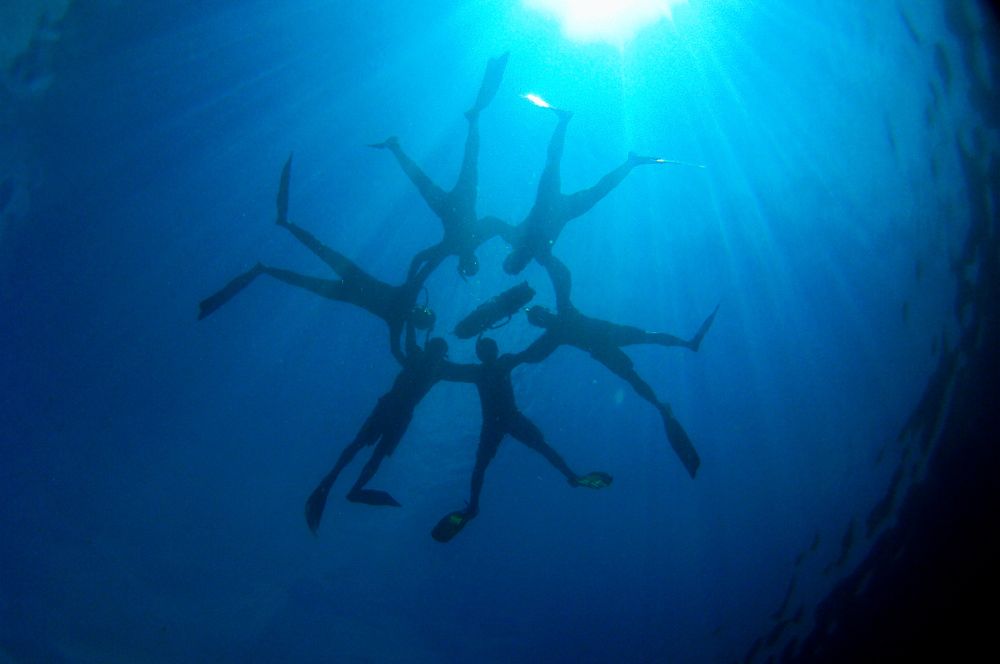
Ready to dive into the world of deep freediving? It all starts with finding the right training. Look for certified courses, reputable schools, and experienced instructors. They will guide you through the learning process, ensuring that you develop the necessary skills and knowledge for a safe and thrilling deep freediving journey.
Finding a Reputable Freediving School
Initiating your deep freediving journey begins with locating a reliable freediving school. Reputable schools offer certified courses by recognized organizations like AIDA, PADI, or SSI. The cost of these courses can range from 150€ to 500€, influenced by location and individual school overheads.
Selecting the Right Freediving Instructor
After identifying a reliable school, the subsequent step involves choosing an appropriate freediving instructor. A qualified and experienced instructor is vital for ensuring your safety and effective learning during your freediving courses. Their guidance is crucial for your success in this exciting journey.
Deep Freediving Gear Essentials
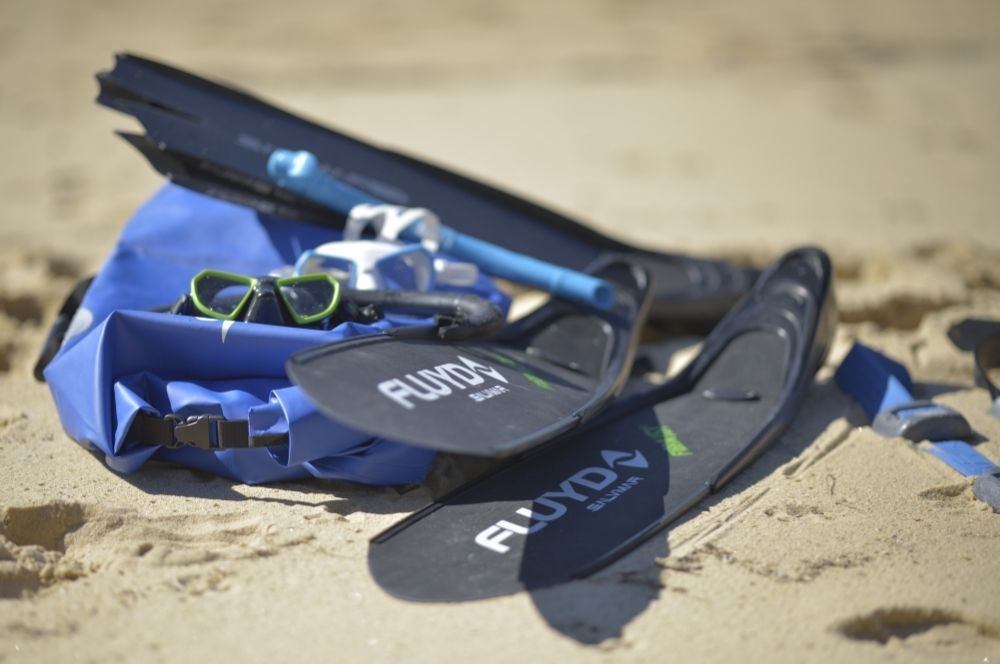
Similar to every sport, deep freediving necessitates the use of suitable gear. From fins to dive watches and computers, your gear plays a significant role in your diving experience. It’s important to choose gear tailored to your specific activities and preferences for optimal performance and comfort.
Choosing the Right Fins
Choosing the right fins is crucial for your deep freediving experience. Fins are available in various materials, each offering its own set of benefits. Whether you prefer the lightweight and high performance of carbon fiber, the flexibility of rubber, or the durability and economy of plastic, the choice is yours.
Proper Dive Watches and Alarms
Dive watches and computers are another essential piece of gear. They provide you with vital information such as depth, dive duration, and surface intervals, enhancing your safety and efficiency during deep dives. Some even come with alert features, helping you manage your dive profiles and prevent rapid ascents.
Diving with a Buddy: The Importance of Teamwork in Deep Freediving
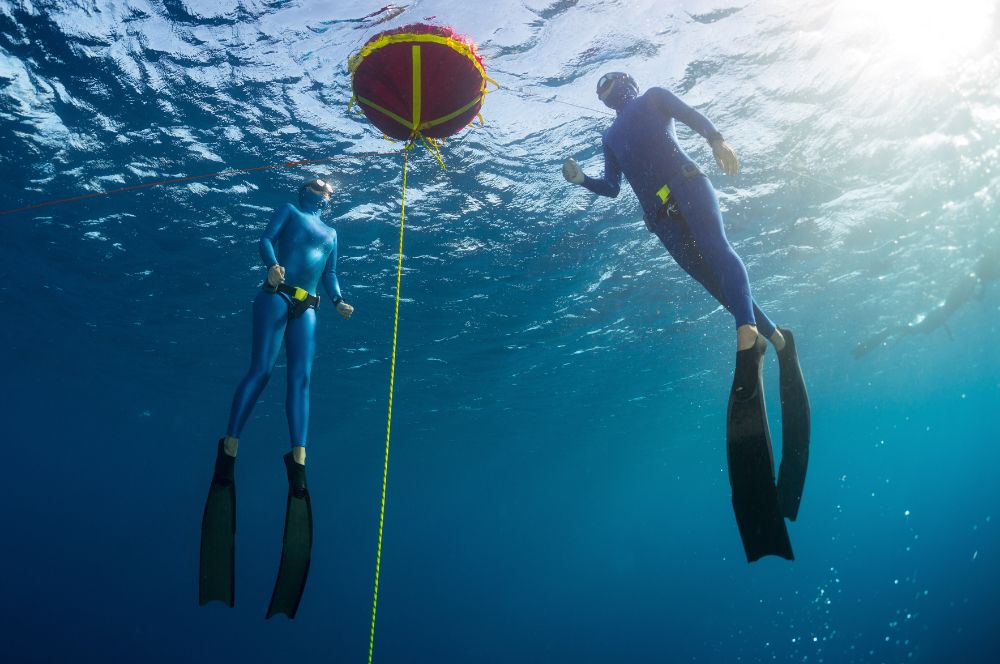
Deep freediving is a sport that thrives on teamwork. Diving with a buddy is not just a safety measure; it also enhances communication and fosters a sense of camaraderie. A dive partner can provide support, share experiences, and offer advice, making your diving experience more sociable and rewarding.
Benefits of Diving with a Partner
Numerous benefits come with diving alongside a partner. Beyond securing safety via constant presence and adherence to basic safety rules, a dive buddy can offer a socially enriching experience.
Practices like maintaining constant visual contact or using a surface float marker are essential for keeping track of each other during a dive.
Communication and Safety Protocols
Clear communication and pre-arranged protocols are essential for effective teamwork and safety during deep freediving. Hand signals are an important communication method, conveying your well-being during a dive. Accurate timing is also crucial to ensure a diving buddy meets the freediver at the correct moment during ascent, typically at one-third of the dive depth.
Summary
The world of deep freediving is a thrilling journey of exploration and self-discovery. It requires discipline, skill, and a deep respect for the ocean’s depth. With the right training, safety measures, and gear, you too can dive deep, push your limits, and experience the exhilarating world beneath the surface. So, are you ready to take the plunge?
Frequently Asked Questions
What is the deepest freediving dive?
The deepest freediving dive on record is 214 meters, achieved by the current world record champion, who holds the title of "the deepest man on earth."
What is considered deep freediving?
Deep freediving involves safely diving to depths of 40 feet (12.19 meters) or more, often exploring underwater environments such as reefs. As the body acclimatizes, it undergoes various changes to adapt to the conditions.
What are the main disciplines in deep freediving?
The main disciplines in deep freediving include Constant Weight with bifins or monofin (CWT), Free Immersion without fins (FIM), and Constant Weight No Fins (CNF) where the diver uses only their muscle strength. Try exploring these disciplines to challenge yourself and improve your freediving skills.
What are the benefits of diving with a partner?
Diving with a partner ensures safety, enhances communication, and provides a sociably rewarding experience, ultimately making the dive more enjoyable and secure.
How can I prevent lung squeeze during deep freediving?
To prevent lung squeeze during deep freediving, gradually adapt to increasing depths and avoid unnecessary intensive warm-ups. Happy diving!
Related Freediving Posts
-
Master Your Breath: Top Breathing Techniques…
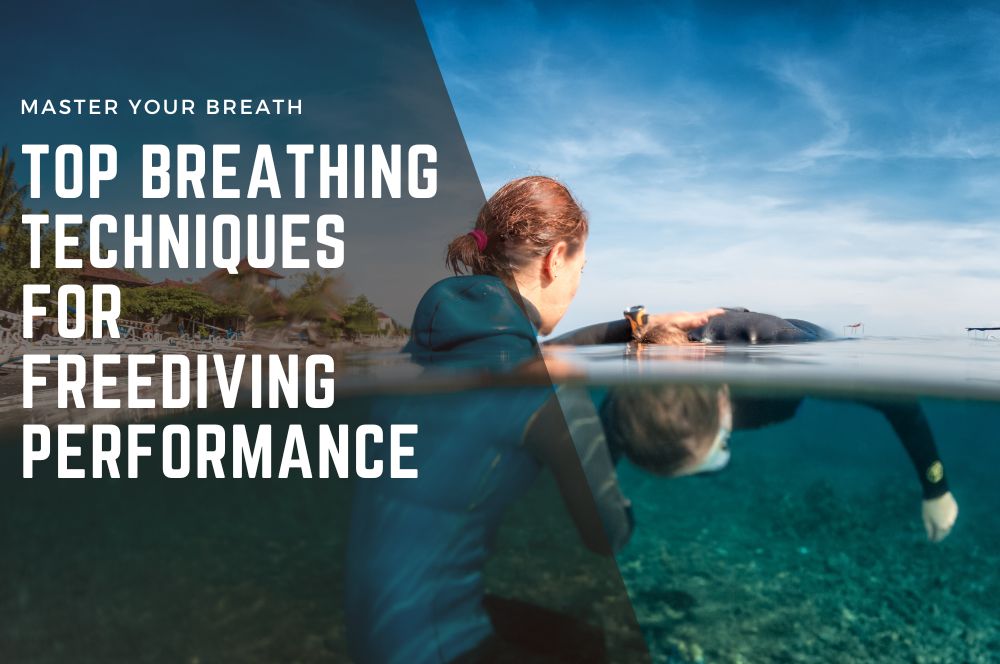
Master Your Breath:…
Master Your Breath: Top Breathing Techniques for Freediving Performance If you’re searching for breathing […] -
Learn to Freedive: Your Guide to the…
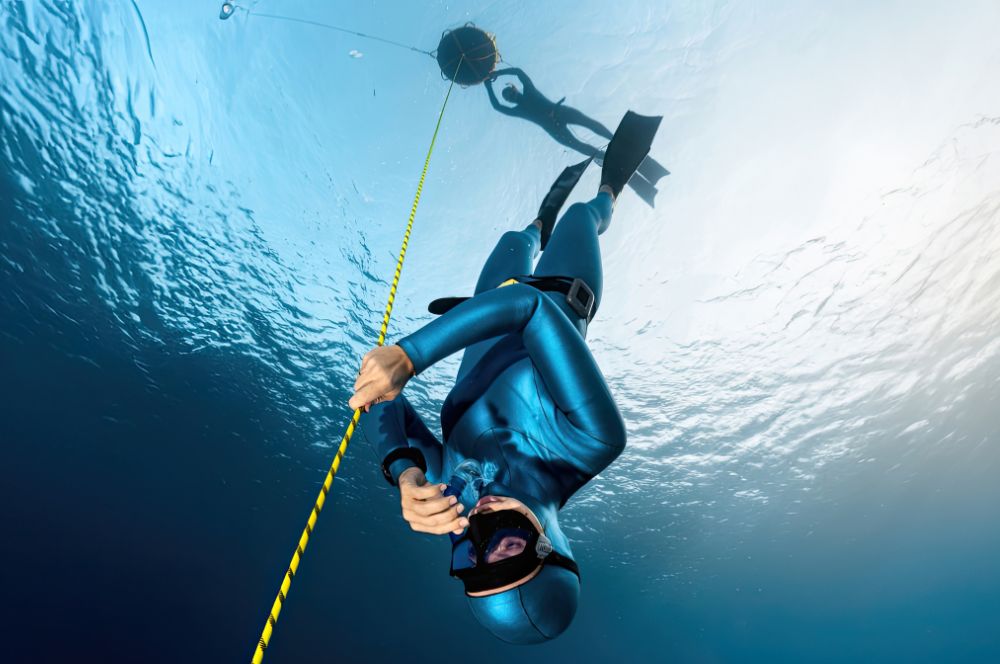
Learn to Freedive:…
Learn to Freedive: Your Guide to the Freediver Course for Fun Dive into a world of tranquillity, serenity, […] -
Sydney's Thriving Freediving Community:…
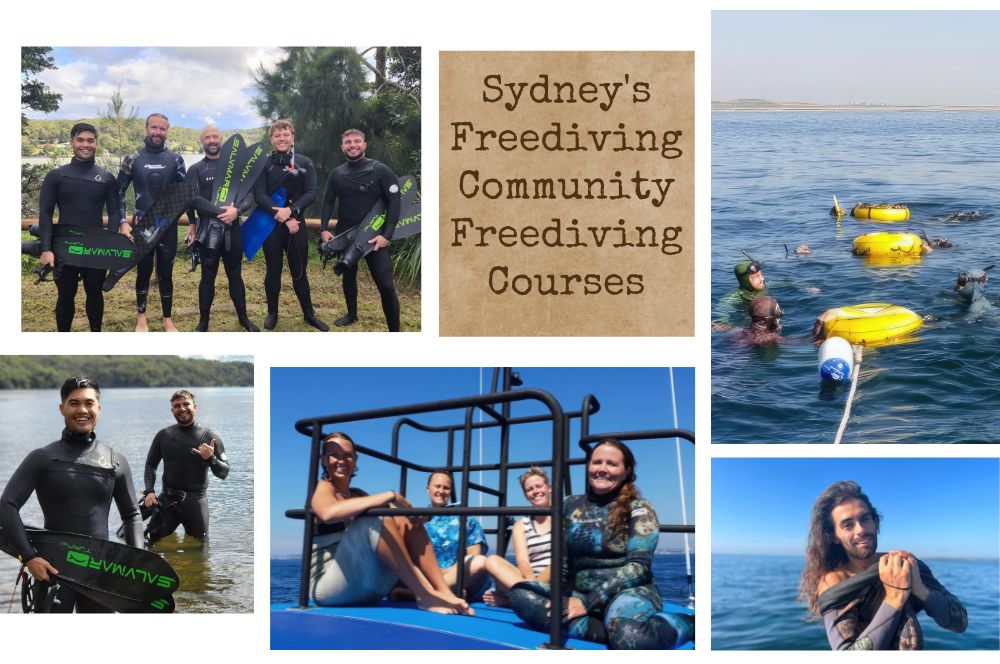
Sydney's Thriving Freediving…
Sydney's Freediving Community: An Introduction Welcome to the exhilarating world of freediving in Sydney! […] -
Unlock the Benefits of Neck Weight…
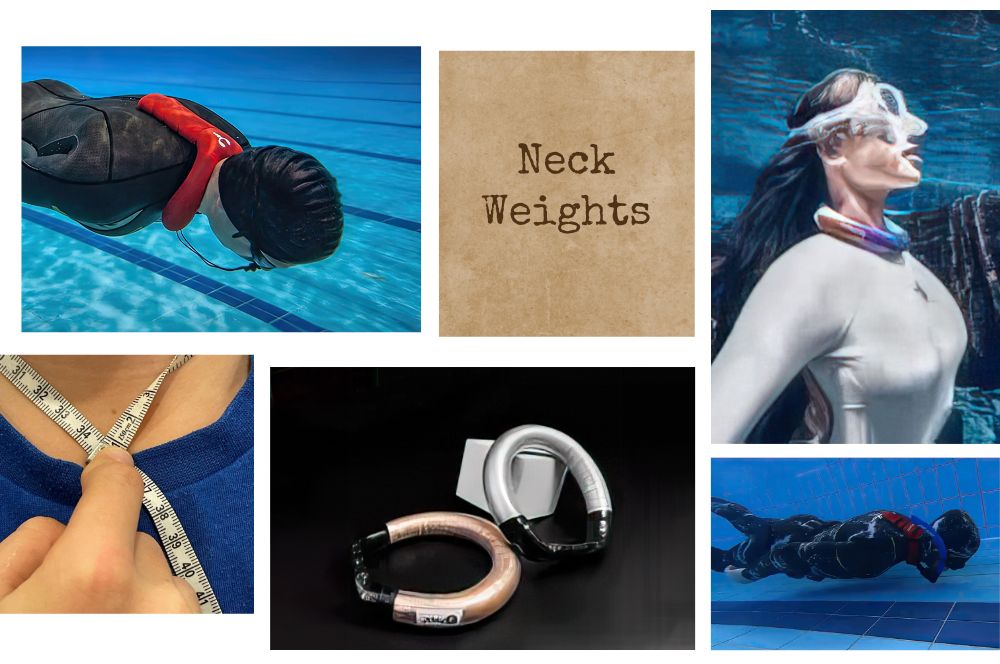
Unlock the Benefits…
Unlock the Benefits of Neck Weight Freediving Freediving is an extraordinary sport that tests your physical […]
Recent Posts
